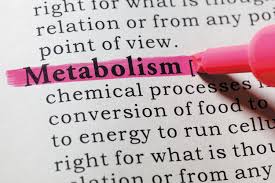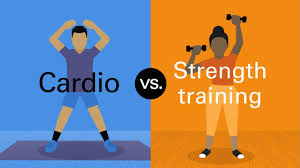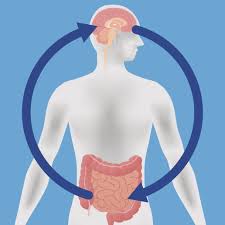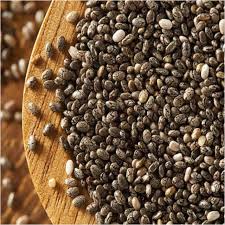Strength Training vs. Cardio: Which One is Better?
Strength Training vs. Cardio: Which One is Better?

When it comes to fitness, one of the biggest debates revolves around the effectiveness of Strength Training vs. Cardio exercise. Some people swear by lifting weights, while others champion the benefits of running, cycling, or swimming. But which one is truly better? The answer depends on individual fitness goals, health conditions, and personal preferences. In this blog, we will explore the benefits of both strength training and cardio to help you determine which one aligns best with your goals.
Understanding Strength Training

Strength training, also known as resistance training or weight training, involves exercises designed to improve muscle strength and endurance. This can be done using free weights, machines, resistance bands, or bodyweight exercises like push-ups and squats. Many fitness experts recommend incorporating strength training into a regular workout routine, as it provides numerous benefits beyond just increasing muscle size.
Benefits of Strength Training
- Builds Muscle Mass – Strength training helps in muscle hypertrophy, which leads to increased muscle size and definition. Building muscle not only improves physical appearance but also contributes to better overall strength and endurance.
- Boosts Metabolism – Muscle tissue burns more calories than fat tissue, meaning that increasing muscle mass can elevate resting metabolic rate. This helps in long-term fat loss and weight management.
- Enhances Bone Density – Lifting weights strengthens bones, reducing the risk of osteoporosis and fractures. This is especially important as we age since bone density naturally decreases over time.
- Improves Functional Strength – Stronger muscles contribute to better posture, balance, and injury prevention. Everyday activities such as lifting groceries, climbing stairs, and carrying heavy objects become easier with improved strength.
- Supports Weight Loss – While cardio burns calories during exercise, strength training continues to burn calories even after the workout due to the afterburn effect (excess post-exercise oxygen consumption or EPOC). This means your body continues to burn calories even when you’re at rest.
- Increases Insulin Sensitivity – Strength training helps regulate blood sugar levels, reducing the risk of type 2 diabetes.
- Enhances Mental Health – Studies show that resistance training can reduce symptoms of anxiety and depression, contributing to overall well-being.
Understanding Cardio

Cardio, short for cardiovascular exercise, involves activities that increase heart rate and respiration to improve endurance and cardiovascular health. Popular forms include running, cycling, swimming, jumping rope, and aerobics. Cardio workouts range from low-intensity steady-state (LISS) exercises, such as walking, to high-intensity interval training (HIIT), which involves short bursts of intense activity followed by rest periods.
Benefits of Cardio
- Improves Heart Health – Cardio strengthens the heart and reduces the risk of heart disease and stroke. A stronger heart can pump blood more efficiently, improving overall circulation.
- Burns Calories Efficiently – Activities like running and cycling can burn significant calories, aiding in weight loss. Depending on intensity, a cardio session can burn anywhere from 300 to 800 calories per hour.
- Enhances Endurance and Stamina – Regular cardio workouts increase lung capacity and overall stamina, making daily activities easier.
- Boosts Mood and Mental Health – Cardio releases endorphins, which help reduce stress, anxiety, and depression. The “runner’s high” is a well-known phenomenon associated with prolonged aerobic exercise.
- Regulates Blood Sugar Levels – Engaging in cardio exercises can help manage diabetes and improve insulin sensitivity, reducing the risk of metabolic disorders.
- Aids in Digestion – Cardiovascular activity stimulates the digestive system, helping prevent bloating and constipation.
- Improves Sleep Quality – Regular cardio exercise has been linked to better sleep patterns, helping those who suffer from insomnia or disrupted sleep cycles.
Strength Training vs. Cardio: Which One is Better?
For Weight Loss

Both strength training and cardio contribute to weight loss but in different ways. Cardio burns more calories during exercise, making it effective for immediate calorie expenditure. However, strength training builds muscle, which increases metabolism and burns calories even at rest. For optimal weight loss, a combination of both is ideal.
For Muscle Building

Strength training is the clear winner for muscle growth. While some forms of cardio, like sprinting, can contribute to muscle development, lifting weights and resistance exercises are far more effective in building and maintaining muscle mass. If your goal is to get a toned, sculpted body, strength training should be a priority.
For Heart Health

Cardio is more beneficial for cardiovascular health as it directly enhances heart function and endurance. However, strength training also contributes to heart health by improving circulation and reducing blood pressure. A balanced approach incorporating both is best for heart health.
For Metabolism Boost

Strength training has a longer-lasting impact on metabolism due to muscle development and the afterburn effect. Cardio burns calories quickly but does not sustain a high metabolic rate after exercise. Again, a mix of both can maximise metabolic benefits.
For Longevity and Overall Health
Studies show that both strength training and cardio contribute to longevity. Cardio supports heart health and reduces the risk of chronic diseases, while strength training maintains muscle mass and bone density, which are crucial as we age. Older adults who engage in strength training experience fewer falls and injuries, making it an essential part of aging healthily.
Combining Strength Training and Cardio
Instead of choosing one over the other, combining both forms of exercise can provide comprehensive health benefits. Here’s how to integrate them effectively:
- Alternate Days – Dedicate different days to strength training and cardio to allow proper recovery.
- Hybrid Workouts – Combine both in one session, such as circuit training with strength and cardio elements.
- High-Intensity Interval Training (HIIT) – This blends short bursts of intense cardio with strength exercises for maximum efficiency.
- Listen to Your Body – Adjust the frequency and intensity of workouts based on energy levels and fitness goals.
- Start with Strength, End with Cardio – If you prefer doing both on the same day, lifting weights first ensures you have enough energy for strength-based movements before engaging in a cardio session.
Common Myths and Misconceptions
- “Lifting weights makes you bulky.” – This is a common misconception, especially among women. Strength training tones muscles and helps with fat loss without necessarily making you look “bulky.”
- “Cardio alone is enough for weight loss.” – While cardio burns calories, combining it with strength training yields better long-term results.
- “You should do hours of cardio to be fit.” – Short, intense sessions (like HIIT) can be just as effective as long-duration workouts.
Conclusion
So, which one is better—strength training or cardio? The answer depends on what you are looking to achieve. If you want to build muscle, improve bone density, and boost metabolism, strength training is the way to go. If your goal is to improve heart health, burn calories quickly, and enhance endurance, then cardio is essential. Ultimately, the best approach is to incorporate both into your fitness routine for a balanced and sustainable workout regimen. By understanding the benefits of each, you can tailor your workouts to meet your specific needs and enjoy a healthier, fitter lifestyle.
No matter which form of exercise you prefer, consistency is key. Find activities you enjoy and stay committed to your fitness journey. A balanced approach will yield the best results, helping you achieve your health and fitness goals efficiently and sustainably.






